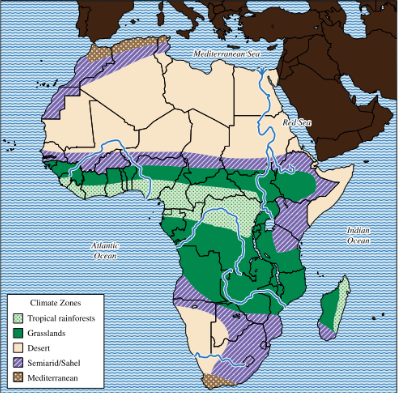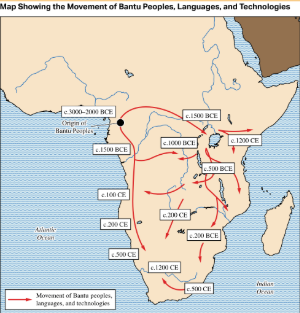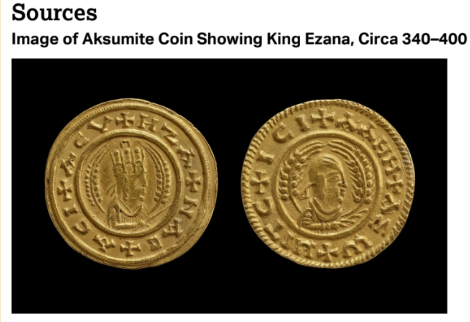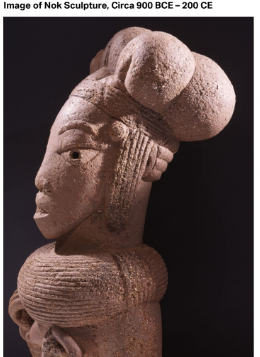AP African American Studies Unit 1
1/67
Earn XP
Description and Tags
Origins of the African Diaspora
Name | Mastery | Learn | Test | Matching | Spaced |
|---|
No study sessions yet.
68 Terms
The Aproach to AP AAS
Interdisciplinary, relating to more than one branch of knowledge
Brings in history, sociology, art, culture, geography and literature
Analyzes the contributions of AAs in America and the African Diaspora
Helps to understand the modern-day issues black people face
African Diaspora
The movement and dispersal of groups of people from their place of origin to new locations
How African American Studies emerged
From black artistic, intellectual and political events
Heightened throughout the Civil RIghts Movement (more specifically the Black Power Movement)
Black Power Movement
Focused on racial pride, self-determination and self-defense
Many black college students entered white colleges for the first time in history
Black Campus Movement (1965-1972)
Hundreds of thousands of Black, Latino, Asian and white supporters
Demanded greater opportunities for Black Studies Programs
Demanded more support for Black students, faculty and administrators
First 4-year college to establish a Black studies department
San Francisco State College
Africa
The birthplace of humanity, with a long, complex, and heavily researched history
Second largest continet
Common misconceptions
Africa is undocumented/unknowable
African-American history is simple
African-American history begins in 1500 (the slave trade)
African Climate Zones
Desert (Sahara)
Semiarid (Sahel)
Savannah Grasslands
Tropical Rainforest
Mediterranean zones

Varied climate zones caused/facilitated
Diverse trade opportunities
Trade in Desert/Semi-Arid Areas
Nomads searching for food, water, and trading salts
Trade in the Sahel
Traded live stock
Trade in the Savannah Grasslands
Grew grain & crops
Trade in the Tropical Rainforest
Grew yams, kola nuts, and traded gold
African Bodies of Water
2 seas (Red Sea, Mediterranean Sea)
2 Oceans (Indian Ocean, Atlantic Ocean)
5 Major Rivers
Major African Rivers
NIger River
Congo RIver
Zambezi River
Orange River
Nile RIver
Role of the proximity of water
Supported growth of early societies and global connections
Population Centers in the Sahel and Savannah
Regions supported pop. growth
Major water routes supported travel and trade
Fertile land supported agriculture and the domestication of animals
Linked northern and tropical Africa
Bantu Expansion
Series of migrations caused by population growth in Western and Central Africa throughout the continent from 1500 BCE to 500 CE
One Movement Southward/Eastward
One movement Westward

Causes of Bantu population growth
Technological innovations
Tools and Weapons
Ironworking
Agricultural innovations
Cultivating bananas, yams and cereals
Iron tools made farming easier
Egypt
One of the world’s earliest complex, large-scale societies
Emerged along the Nile River around 3100 BCE (ancient era)
At its height, controlled from Syria to Sudan
What made Egypt Complex
Urban Centers
Social Hierarchies
Writing system (Hieroglyphics)
Religion
Pyramids
Advanced trade network
Nubia/Kush
One of the world’s earliest complex, large-scale societies
Emerged along the Nile River around 3000 BCE (ancient era) in present-day Egypt and Sudan
Kush/Nubia writing system
The Meroitic Script was a writing system Developed in the major city of Meroe in Nubia/Kush
Kush and Egypt’s Relationship
Kush was the source of Egypt’s gold and luxury trade items
Caused conflict —> Nubia invaded + defeated Egypt (750 BCE)
Established the 25th dynasty of the Black Pharaohs, who ruled Egypt for a century
Aksum
Emerged in eastern Africa (Eritrea and Ethiopia) in 100 BCE
Its Strategic location contributed to the rise and expansion
Red Sea, Mediterranean Sea, connections to the Roman Empire/India
Access to trade networks

Aksum writing system
Developed its own script: Ge’ez
Still used as main language in the Ethiopian Orthodox Church
First African Society to Adopt Christianity
Aksum, under leadership of King Ezana
Without outside influence of colonialism/transatlantic slave trade
Nok
Emerged around 500 BCE in present-day Nigeria (Sub-Saharan/West Africa)
Archaeological research (1940s) shows that Nok society may be ancestors of later societies (1100+ CE) Ife Yoruba & Benin cultures
Shows that African history is long and complex
Why was the Nok Complex
Early ironworking society
Pottery
Naturalistic terracotta sculptures of animals and people
Unique hairstyles and jewelry
Stone instruments

African Americans used ancient Africa in order to
Counter racist stereotypes
Stereotypes that African societies had no government or culture
This formed the basis of African American studies courses
Reaserch on Africa’s history
Became the basis for African Independence in the mid 1900s
1952: Egypt underwent a revolution overthrowing British Rule
Sudanic/Sahelian Empires
Refers to 3 powerful empires: Ghana, Mali and Songhai
F;punished between 600-1500 CE
From Senegambia to present-day Cote d’Ivoire and Nigeria
Renowned for gold mines
Enslaved people in North America came from West Africa and West Central Africa
Sudanic Empires role of location
Its strategic location gave access to trade routes
Connected trade from Sahra to Sub-Saharan Africa
Led to the spread of Islam and expansion in West Africa
Ghana
Flourished from 300-1200 CE
Present day Mauritania and Mali
Not in present day Ghana
Ironworking society
Strong government and army
Trade in Ghana
Traders from North Africa brought Islam
Became rich by controlling trade routes
Declined due to lost access of trade routes/growth of other empires
Mali
Flourished from 1200-1600 CE
Present-day Mali Mauritania, Senegal
1312-1337: Mali was ruled by Mansa Musa (Wealthy and influential)
Mansa Musa
Ruler of Mali
Established empire as a center for trade, learning, and cultural exchange
Extended power over neighboring groups
Leaders crossbred horses from North Africa to form a stronger calvar y
Purchased steel weapons from North Africa/Islamic World
Mansa Musa’s Hajj
Hajj (h-ehj): Holy Islamic pilgrimage to the city of Mecca
Put Mali on the map as a powerful empire
Intrigued mapmakers and merchants in Europe and the Middle east to trade manufactured goods for gold
Catalan Atlas
Details the wealth/influence of Mansa Musa and the Mali Empire
Perspective of a cartographer from Spain
Mansa Musa is depicted with a gold crown and orb
Conveys the influence of Islam of West Afican societies and the function of Mali as a center for trade and cultural exchange
Songahi
Flourished from 1400-1500 CE
Last and largest of the Sudanic Empires
Strong, centralized, autocratic government
Developed unified cities
Promoted Islamic learning
Trade in Songhai
Thrived through trans-Saharan trade
Portuguese began exploring and trading along Africa’s West Coast
Trade shifted to Atlantic Ocean
Fewer merchants used desert routes Songhai Controlled
Hurt Songhai economy and led to decline of the empire
West African Trading cities
Became centers of learning around the 15th and 16th century
Timbuktu (Mali)
Traded books
Universities
Huge learning community
Drew astronomers, mathematicians, architects and jurists
Griots
Prestigious historians, storytellers, and musicians
Maintained shared community history, traditions, and cultural practices
Preserved knowledge of community’s births, deaths and marriages
Included both women and men
Sunjata Story
Mande Griots have passed down oral traditions like Epic of Sundiata (the Lion Prince)
Mande = ethnic/lingusitc group in West Africa
Religious Syncretism
Blending of religion to create a new blended belief system
Cosmologies
Big ideas about a culture/how the universe works
What enslaved Africans brought to the Americas
Blended spiritual practices with Christianity and Islam to The America
1/4th of enslaved Africans were from Christianity
1/4th of enslaved Africans were from Islam
Spiritual Practices in the Americans can be traced back to
West/West Central Africa
Veneration of ancestors
Divination
Healing practices
Collective singing and dancing
Louisiana Voodoo
Osian del Monte
Afro-Cuban performance group
Used by enslaved Africans for strength
Religious syncretism
Before the slave revolts for strength
The Swahili Coast
Stretches from Somalia to Mozambique
Connected Africa to Arab, Persian, Indian and Chinese traders
Connected by shared language (Swahili) and religion (Islam)
Strength of trade garnered attention of Portugal
Invaded major city-states
Established settlements in 1500s to control Indian Ocean trade
Christianity in the Kongo
King Nzinga a Nkuwu and his son Nzinga Mbemba converted the kingdom to the Kongo to Roman Catholicism
Strengthened trade with Portugal
Kongo became wealthier
Primary goods: Ivory, salt, copper, textiles
Christianity gained mass acceptance
African Catholicism blended elements of Christianity with local cultural traditions
Without foreign control
Portugal and the slave trade
King of Portugal demanded access to trade of enslaved people in exchange for military assistance
Kongo nobles joined the slave trade early on, but couldn’t control its scale over time
Largest source of enslaved people
Kongo and general West Central African region
Chrisitanity in Modern Kongo
1/4th of enslaved Africans transported to the US came from West Central Africa
West Central Africans were Christian before arrival to the Americas
Before the slave trade, people in the Kongo would name children after saints or according to the day they were born
Christian names have African origins (Juan, Joao, John)
Ideas and practices have endured
Role of Women
Composed of family groups held together by extended kinship ties
Formed the basis for political alliances
Women played many roles
Spiritual leaders
Political advisors
Market traders
Educators
Agriculutralists
Queen Idia (Benin)
Late 1400s: First Queen Mother in Benin (present day Nigeria)
Political advisor to her son, the King
Led armies into battle
Igala-Benin War (1515-1516)
Relied on spiritual power and medicinal knowledge for victories
Queen Njinga (Ndongo-Matamba)
Early 1600s: Queen of the kingdoms of Ndongo and Matamba (present-day Angola)
Led armies into battle
Engaged in 30 years of guerrilla warfare against Portugal to maintain sovereignty and control
Participated in the slave trade for wealth/political power
Grew Matamba’s army by sheltering escapees from Portuguese slavery
Queen Idia’s Legacy
Iconic symbol of Black women’s Leadership throughout African diaspora
1977: The Ivory mask was adopted as the symbol of FESTAC
Queen Njinga Legacy
Iconic symbol of skilled political and military leadership
Strength/power ushered in nearly 100 years of women rulers in Matamba
Transatlantic Slave Trade
Forced movement of millions of Africans across the Atlantic ocean to the Americas
Were enslaved and forced to work
Mainly on plantations growing sugar, tobacco, cotton and other cash crops
What lead to the Transatlatic Slave Trade
Late 1400: West African Kingdoms Traded with Portugal for gold, goods, and enslaved people
Replaced older trans-saharan routes
African kingdoms gained more wealth and political power
Especially through slavery which already existed in hierarchical West African societies
Trade increased what populations where?
Trade increased amount of:
Europeans in West Africa
Sub-Saharan Africans in Iberian port cities like Lisbon and Seville
African elites, ambassadors, children of rulers traveled where?
They traveled to port cities for diplomatic, educational, and Religious reasons
Free and enslaved Africans in port cities jobs
Domestic laborers
Boatmen
Guards
Entertainers
Vendors
Knights
Slaved-based Economies
Mid 1400s: Portuguese colonized the Atlantic islands of Cabo Verde and São Tomé
Established cotton, indigo, and sugar plantations using slave labor
1500s: 50,000 enslaved Africans transported to work on Portuguese-colonized Atlantic islands and in Europe
Plantations became a model for slave-based economies in Americas